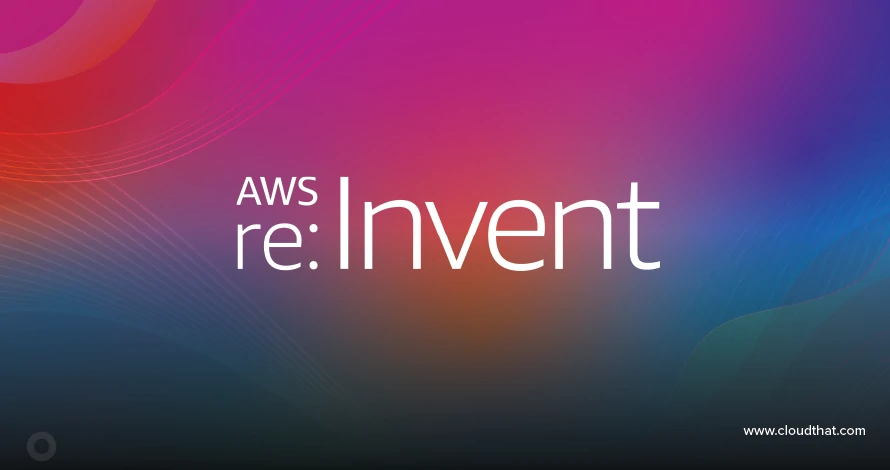|
Voiced by Amazon Polly |
Recently I took the AWS Solution Architect Certification and cleared it. My previous blog post was general information about AWS Certification and can be found here. This blog post is about some Sample Questions* for AWS Certification for AWS Certified Solution Architect. Answers with explanations are at the bottom.
Freedom Month Sale — Upgrade Your Skills, Save Big!
- Up to 80% OFF AWS Courses
- Up to 30% OFF Microsoft Certs
- Ends August 31
Quiz
- Does S3 provide read-after-write consistency?
- No, not for any region
- Yes, but only for certain regions
- Yes, but only for certain regions and for new objects
- Yes, for all regions
- What is the maximum size of a single S3 object?
- There is no such limit
- 5 TB
- 5 GB
- 100 GB
- Is data stored in S3 is always encrypted?
- Yes, S3 always encrypts data for security
- No, there is no such feature
- Yes, but only when right APIs are called
- Yes, but only in Gov Cloud datacenters
- What is true for S3 buckets (select multiple if more than one is true)?
- Bucket namespace is shared and is global among all AWS users.
- Bucket names can contain alpha numeric characters
- Bucket are associated with a region, and all data in a bucket resides in that region
- Buckets can be transferred from one account to another through API
- EBS can always tolerate an Availability Zone failure?
- No, all EBS volume is stored in a single Availability Zone
- Yes, EBS volume has multiple copies so it should be fine
- Depends on how it is setup
- Depends on the Region where EBS volume is initiated
- Which of the following Auto scaling CANNOT do (select multiple if more than one is true)?
- Start up EC2 instances when CPU utilization is above threshold
- Release EC2 instances when CPU utilization is below threshold
- Increase the instance size when utilization is above threshold
- Add more Relational Database Service (RDS) read replicas when utilization is above threshold
- Which of the following benefits does adding Multi-AZ deployment in RDS provide (choose multiple if more than one is true)?
- MultiAZ deployed database can tolerate an Availability Zone failure
- Decrease latencies if app servers accessing database are in multiple Availability zones
- Make database access times faster for all app servers
- Make database more available during maintenance tasks
- What happens to data when an EC2 instance terminates (select multiple if more than one is true)?
- For EBS backed AMI, the EBS volume with operation system on it is preserved
- For EBS backed AMI, any volume attached other than the OS volume is preserved
- All the snapshots of the EBS volume with operating system is preserved
- For S3 backed AMI, all the data in the local (ephemeral) hard drive is deleted
- For an EC2 instance launched in a private subnet in VPC, which of the following are the options for it to be able to connect to the internet (assume security groups have proper ports open).
- Simply attach an elastic IP
- If there is also a public subnet in the same VPC, an ENI can be attached to the instance with the ip address range of the public subnet
- If there is a public subnet in the same VPC with a NAT instance attached to internet gateway, then a route can be configured from the instance to the NAT
- There is no way for an instance in private subnet to talk to the internet
- When an ELB is setup, what is the best way to route a website’s traffic to it?
- Resolve the ELB name to an ip address and point the website to that ip address
- There is no direct way to do so, Route53 has to be used
- Generate a CNAME record for the website pointing to the DNS name of the ELB
Answers:
1) Answer: C.
S3’s consistency model is that of eventual consistency. This means that when an object is stored in S3, it is replicated in different datacenters (availability zones) in the same region. And it can take a short amount of time before all the data centers have a uniform view of the object (This time is usually less than a second, but if system is in distress it could take much longer). Thus in essence, S3 does not provide read-after-write consistency.
But the S3 team has modified the algorithm so as to provide read-after-write consistency for new objects. Which means that if I upload “object-n” for the first time (lets call it version-1), I get the opportunity to immediately read it without any consistency issues. This is though not supported for US-East region. Thus S3 support read-after-write consistency for new objects but for all regions except US-East.
2) Answer: B.
Using multipart upload, a single object in S3 can be upto 5TB in size.
3) Answer: C.
S3 by default do not encrypt the data stored into its service. But using Server Side Encryption feature, if proper headers are passes (in REST), S3 will first encrypt the data and then store that encrypted data.
4) Answers: A, B, C
Bucket namespace is global, which means that if someone creates a bucket called “pics” nobody else can create a bucket of the same name. Bucket names can contain alphanumeric characters which means we can have a bucket named “cloudthat1234”. And when we create a bucket, we have to select a region for the bucket, and all data stored in that bucket is physically stored in that region only (although the data can be accessed from anywhere in the world with proper credentials).
5) Answer: A
One of the known fallacies of EBS is that all the data of a single volume lives in a single Availability Zone. Thus it cannot withstand Availability zone failures.
6) Answer: C, D
Auto scaling cannot increase instance size of an EC2 instance. The idea is to be able to scale horizontally, and not vertically. Also D is correct as Auto scaling currently cannot automate RDS instance to do anything.
7) Answers: A, D
RDS MultiAZ does make database a single AZ failure tolerant, as it has automatic failover feature, where the secondly will become primary and application can keep accessing the database. It also increases availability during maintenance, as maintenance is performed first on secondary, then its made primary and then old-primary is updated.
8) Answers: B, C, D
9) Answer: C
10) Answer: C
The ip address of an ELB can change, so it’s not advisable to point domain directly at that ip address. Instead use CNAME to map to the ELB DNS name
—–
I will also be conducting a bootcamp for this certification in Bangalore and online. If you are interested to join, please click here and fill out the form.
Also more sample questions are coming, so keep checking.. Please share if you liked the post by using the social buttons below.
I have also uploaded part 2 of sample questions here.
Disclaimer: These questions are NOT what were in my certification exam. I personally or CloudThat do not have any official tie-up with Amazon regarding the certification or the kind of questions asked. These are my best guesses for the kind of questions to expect, given my vast experience with AWS in general and with the examination.
Freedom Month Sale — Discounts That Set You Free!
- Up to 80% OFF AWS Courses
- Up to 30% OFF Microsoft Certs
- Ends August 31
About CloudThat
CloudThat is an award-winning company and the first in India to offer cloud training and consulting services worldwide. As a Microsoft Solutions Partner, AWS Advanced Tier Training Partner, and Google Cloud Platform Partner, CloudThat has empowered over 850,000 professionals through 600+ cloud certifications winning global recognition for its training excellence including 20 MCT Trainers in Microsoft’s Global Top 100 and an impressive 12 awards in the last 8 years. CloudThat specializes in Cloud Migration, Data Platforms, DevOps, IoT, and cutting-edge technologies like Gen AI & AI/ML. It has delivered over 500 consulting projects for 250+ organizations in 30+ countries as it continues to empower professionals and enterprises to thrive in the digital-first world.

WRITTEN BY Bhavesh Goswami
Bhavesh Goswami is the Founder & CEO of CloudThat Technologies. He is a leading expert in the Cloud Computing space with over a decade of experience. He was in the initial development team of Amazon Simple Storage Service (S3) at Amazon Web Services (AWS) in Seattle. and has been working in the Cloud Computing and Big Data fields for over 12 years now. He is a public speaker and has been the Keynote Speaker at the ‘International Conference on Computer Communication and Informatics’. He also has authored numerous research papers and patents in various fields.


 Login
Login

 May 22, 2013
May 22, 2013 PREV
PREV










Random
Jan 13, 2020
thanks for sharing.
Raja
Jan 13, 2019
When an ELB is setup, what is the best way to route a website’s traffic to it?
The answer should be ALIAS & Not CNAME
Barclay
Jul 6, 2017
Question 1 has changed, Amazon added read after write consistency to all regions.
Kamal
Jun 1, 2017
From aws faq’s:
Q: What data consistency model does Amazon S3 employ?
Amazon S3 buckets in all Regions provide read-after-write consistency for PUTS of new objects and eventual consistency for overwrite PUTS and DELETES.
pls correct your answer to question # 1, correct answer is d
viral
Apr 23, 2017
answe for quetion 1 is incorrect
http://docs.aws.amazon.com/AmazonS3/latest/dev/Introduction.html#ConsistencyModel
deexith
Feb 16, 2017
In Q.10 answer cannot be option C,
CNAME as Cname must have FullyQualified domain name.
Ephemeral storage are also called volumes, please refer to the above.
Siddiqi
Jan 30, 2017
Hi Bhavesh,
The write-up and questions for the exam have been truly interesting and i look forward to take up the exam. Awaiting further new upates.
GUNTUPALLI BALA BHASKAR
Dec 28, 2016
more number of questions may be helpful to test myself
deepak katiyar
Nov 6, 2015
Hi,please help me
Few of my question that i need to know.
how can we make Magnetic storage to IOPS storage. how can we transfer the instance to one region to another.
Denny
Oct 20, 2015
Q1 Answer is D. As of Aug 2015 read on write enabled on all regions including Standard region.
Tyron
Apr 23, 2017
Still not D. Even though it is now available on all regions, you don’t have for all actions (only for new objects). So there is no correct answer as of now.
jarmod
Mar 17, 2015
Q4 option b) does not make much sense to me.
Yes, bucket names *can* contain alphanumeric characters but why even include this option? If they could not contain alphanumerics then bucket names would be things like !@#$%, obviously nonsensical.
If, instead, you actually meant to say “bucket names can *only* contain alphanumeric characters” then that would actually be incorrect because bucket names can also contain hyphens.
Bhavesh Goswami
Apr 27, 2015
Jarmod, thanks for your suggestion. But bucekt *can* contain non-alphanumberic characters, so saying bucket can *only* contain alphanumeric characters will be wrong. This question is to test the knowledge about bucketname validity. Some people think buckets can only contain alphabets. Hope this helps.
AWS Certified Solutions Architect – Associate – Passed! | Susta's Log: Sharing my experience in IT
Feb 11, 2015
[…] written questions from another AWS Certified Solutions Architect – Part 1 here and Part 2 […]
Manoj Mithbavkar
Nov 3, 2014
Hi Bhavesh, can i have ur contact number or email?
m having some queries regardinng
thanks
manoj
Bhavesh Goswami
Apr 27, 2015
Manoj, you can send your emails to sales at cloudthat.in
Henry Nguyen
Oct 8, 2014
My apology – SAN boot not WAN boot
senthilkumar
Sep 23, 2014
I want to do the AWS certification. Could you please share more sample questions.
armando
Sep 20, 2014
I want to learn more AWS , can you send me the information thanks
senthilkumar
Sep 19, 2014
Hi Bhavesh Goswami, when you cleared the AWS Exam.
AWSPrat
Aug 11, 2014
Hi Bhavesh , Do you have sample of practice exam questions recently launched by AWS and their solutions…
Raja
Aug 7, 2014
Hi Bhavesh, Good Evening.
I want to do the AWS certification. Could you please share the amount for doing tht?
Venkatesa
Jul 24, 2014
Hi Bhavesh, The questions are very useful and thanks for publishing the same.
Frank AdAid
Jun 18, 2014
it’s more useful, but wait for your subsequent questions for III and IX.Thanks
Hi i am appreaing for the aws professional cerrt , do u have much more or addln questios i m in urgent need can u help,
May 9, 2014
I am appreaing for the AWS Prof cert test, had some problems in the past and not able to have a clear understanding of the questions, wud be helpful if a detailed q and a is sent across, wud be greatful,.
my email id is viaykumar_n@infosys.com
Bhavesh Goswami
Jun 16, 2014
We dont have sample questions for professional certification at this time, but hopefully in future. Please keep checking here or like us on facebook to get updates.
Surge
Apr 9, 2014
Question 8 answer d says “For S3 backed AMI”. Is that a typo? There is no S3 backed AMI. If it is instance store backend AMI, then D is the correct answer.
Bhavesh Goswami
Jun 16, 2014
Instance store AMI is also sometimes called S3 backed AMI, as the AMI is stored in S3.
Bhavesh Goswami
Mar 28, 2014
Aditya, you could have multiple EBS volumes attached to an instance and only the root volume is deleted by default.
Utsav
Feb 6, 2015
Please refer to https://docs.aws.amazon.com/AWSEC2/latest/UserGuide/RootDeviceStorage.html
By default, the root device volume and the other Amazon EBS volumes attached when you launch an Amazon EBS-backed instance are automatically deleted when the instance terminates.
Joseph Priolo
May 10, 2016
I think some of these policies have changed since this was published.
Bhavesh Goswami
Mar 28, 2014
Tom, about question 3, when you click the radio button it puts a special flag in the API call that does Server Side Encryption.
Answers now has alphabets like you recommended. Thanks for your input.
Arun
Jul 16, 2014
Thanks for the posting. And when you say alphabets, you actually mean letters in English alphabet. right?
Tom
Mar 23, 2014
Thank you for putting this together.
Are you sure about the answer to question #3?
You can click a radio button and turn on AES-256 encryption for the bucket that is transparent to anything the user does.
One other note: Answers reference letters but questions reference numbers. Not a biggie but the questions should be change so the answers are A, B, C & D.
Aditya
Mar 16, 2014
I think the answer to question 8, should only be [C, D].
Cause the B options states: “For EBS backed AMI, any volume attached other than the OS volume is preserved”
Any volume attached could be ephemeral too and those wont be preserved. However if the B option said this “For EBS backed AMI, any EBS volume attached other than the OS volume is preserved”, then B would be one of the answers. Not in this present case.
Bhavesh Goswami
Apr 27, 2015
Ephemeral storage is not called “volumes”, that term is used only for EBS 🙂
Preparing for AWS Certified Solutions Architect Professional BETA Exam | CloudThat's Blog
Mar 14, 2014
[…] you haven’t tried out yet, try out Sample Questions for AWS Solutions Architect Associate Level here. Part II of Sample Questions […]
Tosky Joseph
Feb 28, 2014
Hi Bhavesh, The questions are very useful and thanks for publishing the same. Looking forward for more such questions,
Thanks & regards,
Tosky
Bhavesh Goswami
Jun 16, 2014
Thanks Tosky.. We now also have part II. so please check it.
SumanPatra
Sep 25, 2013
helpful thaks…post more and more questions